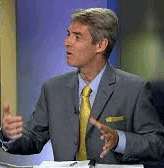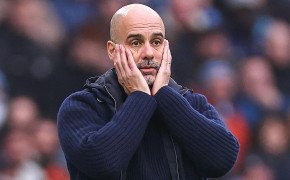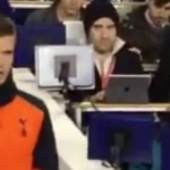There are many benefits to covering South American football; its importance in society and sense of its own history, for example. But looking ahead, the best thing is the chance to get a sneak preview of the stars of tomorrow.
Many of them come through the continent’s Under-20 Championship, held every two years in the high summer of January and February. I have been hooked on the competition since 1999 and have lost count of the great careers I have seen launched, from Ronaldinho and Angel Correa to Alexis Sanchez and Neymar. But there is no doubt about the highlight – in part because of the greatness he has gone one to achieve, in part because so little was known about him at the time. I am referring, of course, to Lionel Messi.
His moment came in Colombia at the start of 2005. The tournament was held in the cities of Armenia, Manizales and Pereira, the country’s coffee growing region – but having the chance to be in at the start of the Messi story gave me a bigger buzz than any of the local produce.
Messi had already been with Barcelona for four years. He had played one friendly for the Catalan giants, and there were rumours of something special – but no hard knowledge. It seemed that Argentina had called him up mainly to grab first preference on him. Spain were interested, and the Argentinian FA wanted to make sure that if there was substance to the rumours, then the land of his birth would be the beneficiary.
They were intrigued to find out what they had, but not so instantly overwhelmed as to award him the No.10 shirt. Messi had 18 on his back, and 17 years to his name. He was two years younger than most of the others in the competition, although he looked four years their junior. When I look back at the notes I wrote at the time, I commented that he had the appearance of “the pigeon-toed runt of the litter.”
It is a line I have used many times since, having first employed it in a round-up of the tournament’s best players for World Soccer magazine – a list which also included Diego Godin, Ezequiel Garay, Hugo Rodallega and Mathias Fernandez. For all Messi’s unassuming appearance, I noted that “he runs with the ball with the balance and fluidity of the truly gifted, and his left foot is a wonderfully subtle weapon.” All of us there were aware that we were in the presence of something special.
What made the tournament such a fascinating place to study Messi was the degree of difficulty. It is a gruelling competition, with nine games in three and a half weeks. And Messi, of course, was younger, smaller and less experienced than those around him. He had to be nursed through, and for some of the games he was coming off the bench in the second half. There was also the fact that the Argentina team were not great. Colombia, on home soil and with a splendid generation, were the champions.
The first time I saw Messi in the flesh – Argentina’s opening game of the decisive second round, against Venezuela – team coach Hugo Tocalli complained that “there were only three times when we managed to put two passes together, which is alarming for a team like ours. Of the 80 balls we won, we lost 79.”
The only goal of the game came when Messi spread the play to the left-back, before getting into the box and applying the finishing touch. In the final match he ghosted into the area to steer home the winner against Brazil. Looking back, I did not pay enough attention to this early evidence of game smarts; this capacity to read the match and to work out how and where he could most hurt the opposition – a quality which has made him one of the greatest to have ever played the game.
I was offered an interview with him. I have to confess that I was keener to talk to Tocalli, who had been involved in Argentina’s youth sides while they churned out a conveyor belt of breathtaking talent. But I bungled it. I got the instructions mixed up and went to the wrong training ground.
Looking back, I bitterly regret missing the chance to speak to the budding star. At the time it hardly seemed a problem. I had enough for an article after speaking with Branco, the former international left-back who at the time was co-ordinating Brazil’s youth sides. He told me that he was looking for big, physically strong kids, right from the start of the process. My jaw dropped. “But what about Messi?” I cried. “Ah,” said Branco, “he’s different.”
He certainly is – and before long my little secret was out. A few months later, with an overhauled line-up which by now included Sergio Aguero, Argentina won the World Under-20 title. And before the year was out, Messi was already playing for his country at senior level and astonishing people on a weekly basis in a Barcelona shirt. And he has been doing it ever since. But I was lucky enough to see him do it first.
















